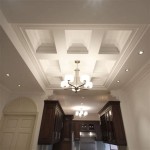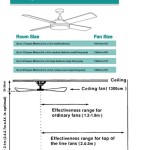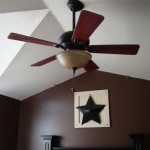Heat Ducts In Ceiling: The Ultimate Guide
If you're looking to improve the heating efficiency of your home, installing heat ducts in your ceiling is a great option. Heat ducts in the ceiling can help to distribute heat more evenly throughout your home, resulting in a more comfortable living space. In this guide, we'll take a closer look at the benefits of heat ducts in the ceiling, as well as the different types of ducts and installation methods available. We'll also provide some tips on how to maintain your heat ducts to ensure they're working properly for years to come.
Benefits of Heat Ducts in the Ceiling
There are several benefits to installing heat ducts in your ceiling, including:
- Improved heating efficiency: Heat ducts in the ceiling can help to distribute heat more evenly throughout your home, resulting in a more comfortable living space. This can lead to lower energy bills, as your heating system will not have to work as hard to maintain a comfortable temperature.
- Increased comfort: By evenly distributing heat throughout your home, heat ducts in the ceiling can help to eliminate cold spots and drafts. This can make your home more comfortable to live in, especially during the winter months.
- Reduced noise: Heat ducts in the ceiling can help to reduce noise from your heating system. This can be especially beneficial if you have a forced-air heating system, which can be noisy when it's running.
- Improved aesthetics: Heat ducts in the ceiling can be hidden from view, which can improve the aesthetics of your home. This is especially beneficial if you have a vaulted ceiling or other architectural features that you don't want to obstruct.
Types of Heat Ducts
There are two main types of heat ducts: rigid ducts and flexible ducts. Rigid ducts are made of metal or plastic and are typically installed in the attic or basement. Flexible ducts are made of a flexible material, such as fiberglass or plastic, and can be installed in tight spaces or around obstacles.
The type of duct that you choose will depend on a number of factors, including the size of your home, the layout of your ductwork, and your budget. Rigid ducts are typically more expensive than flexible ducts, but they are also more durable and efficient. Flexible ducts are less expensive and easier to install, but they are not as durable or efficient as rigid ducts.
Installation Methods
There are two main methods for installing heat ducts in the ceiling: surface-mount and recessed. Surface-mount ducts are installed on the surface of the ceiling, while recessed ducts are installed in the ceiling joists. Surface-mount ducts are easier to install, but they are not as aesthetically pleasing as recessed ducts.
The installation method that you choose will depend on a number of factors, including the type of duct that you are using, the layout of your ceiling, and your budget. Surface-mount ducts are typically less expensive to install than recessed ducts, but they are not as aesthetically pleasing. Recessed ducts are more expensive to install, but they are more aesthetically pleasing and can help to improve the efficiency of your heating system.
Maintenance
Once your heat ducts are installed, it is important to maintain them properly to ensure that they are working properly for years to come. This includes cleaning your ducts regularly to remove dust and debris, and inspecting your ducts for any damage. You should also have your ducts professionally inspected and cleaned every few years to ensure that they are in good condition.
By following these tips, you can help to ensure that your heat ducts in the ceiling are working properly for years to come.
How Do You Clean Heating Ducts In The Ceiling Duct Masters
Hvac Talk Heating Air Refrigeration Discussion

Ducts In Dropped Ceilings Building America Solution Center

Heating Vents Greg Maclellan

The Benefits Of Using Ceiling Hvac Vents

Hvac Ductwork Air Duct Types Working Problems Installation Austin Area Conditioning And Heating G S Mechanical

Best Practices Of Hvac Duct Installation

Ceiling Ac Vents Pros And Cons Aire Serv

Your Hvac Is Showing Designing With Exposed Ductwork Evstudio

How To Get Your Ducts Inside The Building Enclosure Greenbuildingadvisor
Related Posts








